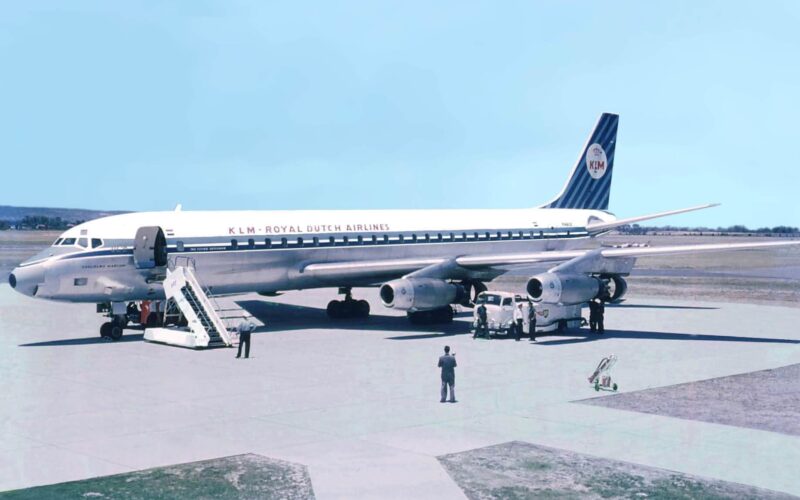As part of AeroTime’s Europe month, this July we will be focusing on the aviation industry in the region. Here we look back at Europe’s – and the world’s – longest operating airline, which still uses its original name.
KLM Royal Dutch Airlines, legally known as Koninklijke Luchtvaart Maatschappij (Royal Aviation Company), was founded in the Netherlands during October 1919.
Early days
The idea to form a new airline in the Netherlands emerged after former pilot Albert Plesman organized the Eerste Luchtverkeer Tentoonstelling Amsterdam – ELTA (the First Aviation Exhibition Amsterdam).
The exhibition, which was opened by Queen Wilhelmina of the Netherlands, was so well received that it sparked the enthusiasm to establish a new airline.
KLM Royal Dutch Airlines was founded in 1919, shortly after the First World War, by eight Dutch businessmen. Plesman became its first administrator and director.
The airline’s inaugural flight took place in 1920 and flew from Croydon Airport, London to Amsterdam Airport Schiphol. The flight was operated using a leased De Havilland DH-16 and carried two British journalists and a bundle of newspapers.
Four years later, KLM operated its first intercontinental flight between the Netherlands and Indonesia, which was a Dutch colony at the time. The airline deployed its Fokker F.VII aircraft on this route.
The carrier’s network, fleet, and passenger traffic were steadily growing until 1939 when the Second World War broke out. This had a significant impact on the airline’s operations.
KLM’s flights over France, Germany and several Scandinavian countries were prohibited or limited, meaning that the airline had to refocus its growth on other destinations. Additionally, many of KLM’s aircraft were repainted orange to limit the potential for confusion with military aircraft.
But despite the difficulties posed by the war, KLM continued to fly and expand to available destinations across the world.
Post-war period and jet age
Shortly after the Second World War, KLM started to reconstruct and expand its network across European destinations and beyond.
The post-war period was a time of recovery for KLM when the Dutch airline began to diversify its fleet and introduced transatlantic flights between Amsterdam and New York. Back in 1946, KLM was the first European airline to operate flights between Europe and North America.
This began a shift in network focus away from the east towards new destinations in the west.
Then came the 1960s and the dawn of the jet age.
The airline acquired its first four-engine McDonell Douglas DC-8 narrowbody jet in March 1960. The new aircraft was deployed on the Amsterdam-New York route and substantially changed the way passengers traveled on long-haul flights. The DC-8 reduced flying time and the number of intermediate landings, meaning that KLM passengers could reach New York in hours instead of days.
The 1970s marked the widebody age in global commercial aviation. As one of the most recognizable names in the industry, KLM followed in the footsteps of a number of other carriers and added the first Boeing 747 aircraft to its fleet in 1971.
In 1989, KLM began developing a global network when it acquired a 20% stake in US airline Northwest Airlines. At the time, Northwest Airlines was one of the Big Four airlines in North America. By 1993, KLM and Northwest Airlines transatlantic flights were operated as a joint venture known as the Wings Alliance.
The merger: Air France-KLM
In May 2004, Air France-KLM airline group was created through a mutual agreement between Air France and KLM Royal Dutch Airlines. Both airlines retained their name and branding and continued separate operations. This merger represented Europe’s largest airline group at the time.
The Air France-KLM group is currently owned by shareholders, of which the French State is the largest with a 28.6% stake, while the Dutch State currently holds 9.3%.
During the COVID-19 pandemic, Air France-KLM received more than €10 billion in state aid from the French and Dutch governments and has recently announced plans to begin repaying its state-backed aid packages.
However, even today Air France-KLM is one of the largest airline groups in Europe, having a combined fleet of 523 aircraft and 44 million passengers carried in 2021. Both group airlines operate a mixed fleet of Airbus, Boeing and Embraer aircraft.

